German construction sector still in recession, civil engineering only bright spot
Introduction & Market Context
BP PLC (NYSE:BP) presented its second-quarter 2025 financial results on August 5, 2025, showcasing a solid performance despite lower oil prices compared to previous periods. The energy giant reported an underlying replacement cost profit of $2.4 billion amid a challenging commodity price environment, with Brent crude averaging $67.9 per barrel during the quarter, down from $75.7 in Q1 2025 and $85.0 in Q2 2024.
The company’s shares responded positively to the results, with BP’s stock rising 2.33% to close at $32.49 on August 4, 2025, and gaining an additional 1.67% in after-hours trading.
As shown in the following quarterly highlights:
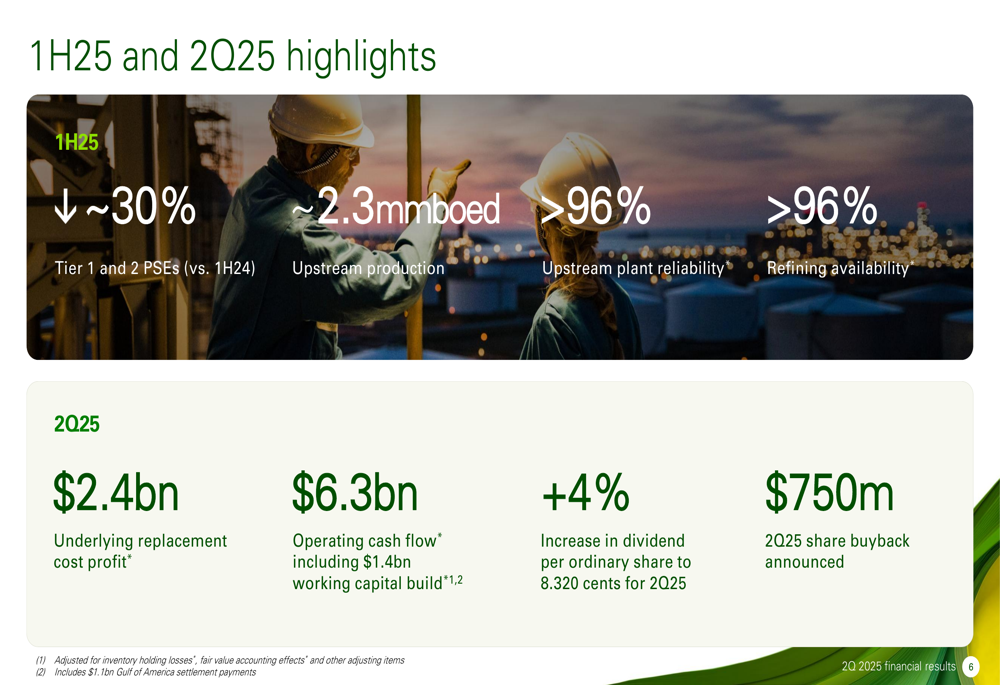
Quarterly Performance Highlights
BP reported an underlying replacement cost profit of $2.4 billion for Q2 2025, supported by strong operational performance across its business segments. Operating cash flow reached $6.3 billion, including a $1.4 billion working capital build, marking a significant improvement from the $2.8 billion reported in Q1 2025.
The company maintained impressive operational metrics with upstream production of approximately 2.3 million barrels of oil equivalent per day. Upstream plant reliability exceeded 96%, while refining availability also surpassed 96%. Safety performance improved as well, with Tier 1 and 2 process safety events down approximately 30% compared to the first half of 2024.
BP’s quarterly financial results reflected the impact of varying market conditions across its business segments:
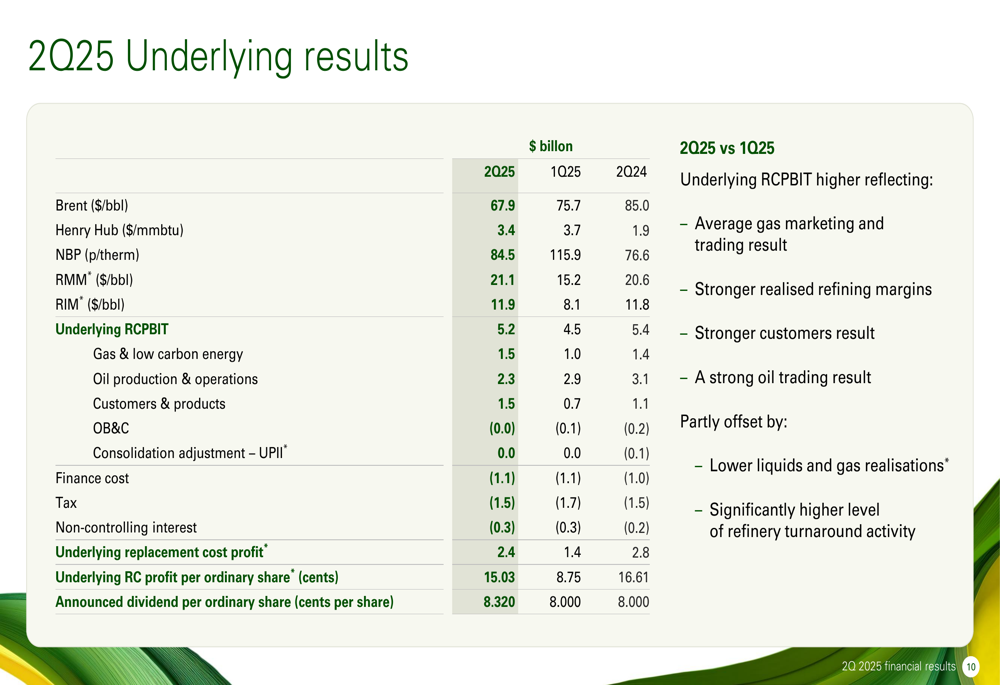
The company’s performance was bolstered by strong refining margins, which increased to $21.1 per barrel in Q2 2025 from $15.2 in the previous quarter. This improvement in downstream performance helped offset the impact of lower gas and liquids realizations in the upstream segment.
Strategic Initiatives
BP continues to execute its strategic plan focused on four key priorities: delivering strong operational performance, enhancing its portfolio through strategic divestments, implementing structural cost reductions, and growing shareholder returns.
The company’s strategic framework is outlined below:
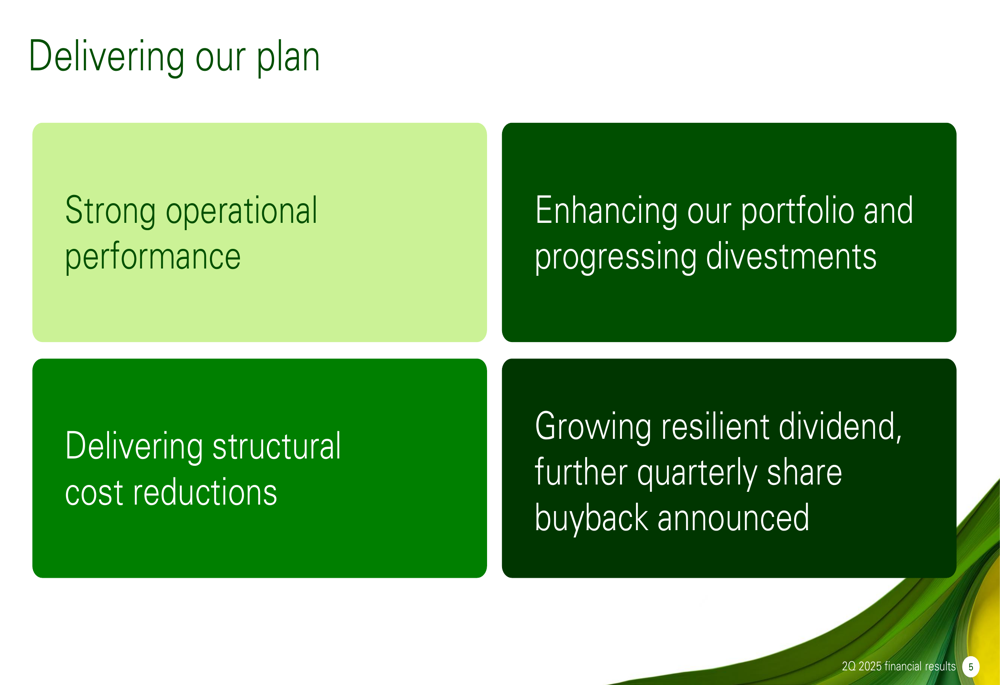
In the upstream segment, BP is expanding its global footprint with five major project start-ups, four final investment decisions, and ten exploration discoveries. These developments span multiple regions including the US Gulf of America, Libya, Egypt, Azerbaijan, Iraq, Trinidad, Mauritania & Senegal, and Brazil.

Simultaneously, BP is reshaping its downstream portfolio while taking a disciplined approach to energy transition investments. The company reported a 3% improvement in refining availability and approximately 50% improvement in customer earnings. Strategic reviews and divestments are progressing, including the Castrol strategic review, Netherlands mobility business sale, and ongoing sale processes for Austria retail and the Gelsenkirchen refinery.
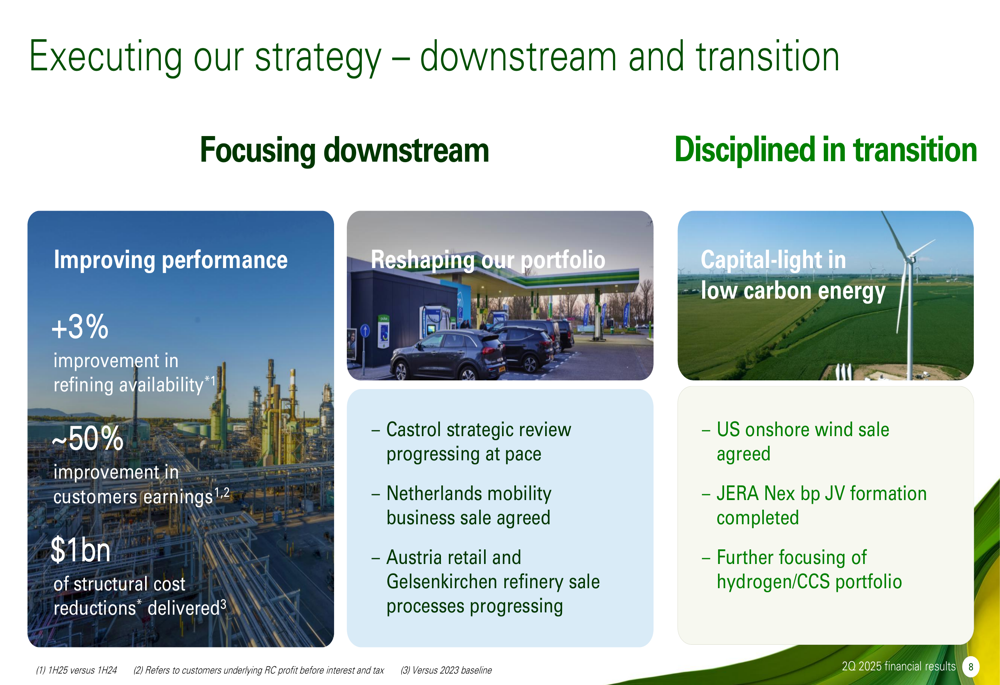
Financial Analysis
BP’s cash flow and balance sheet showed improvement during the quarter. Net debt decreased to $26.0 billion from $27.0 billion in Q1 2025, though it remains higher than the $22.6 billion reported in Q2 2024. The company is targeting a net debt range of $14-18 billion by the end of 2027.
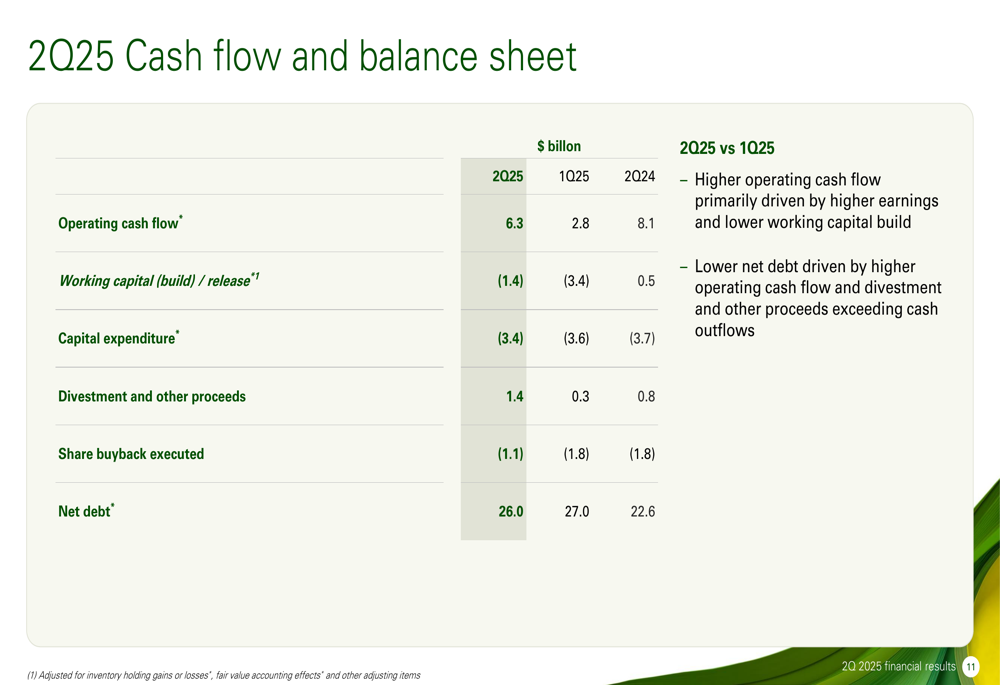
A key component of BP’s financial strategy is its structural cost reduction program. The company has delivered $1.7 billion in structural cost reductions so far against its 2023 baseline, with a target of $4-5 billion by the end of 2027. Progress accelerated in the first half of 2025, with $0.9 billion in reductions achieved during this period compared to $0.3 billion in the first half of 2024 and $0.5 billion in the second half of 2024.
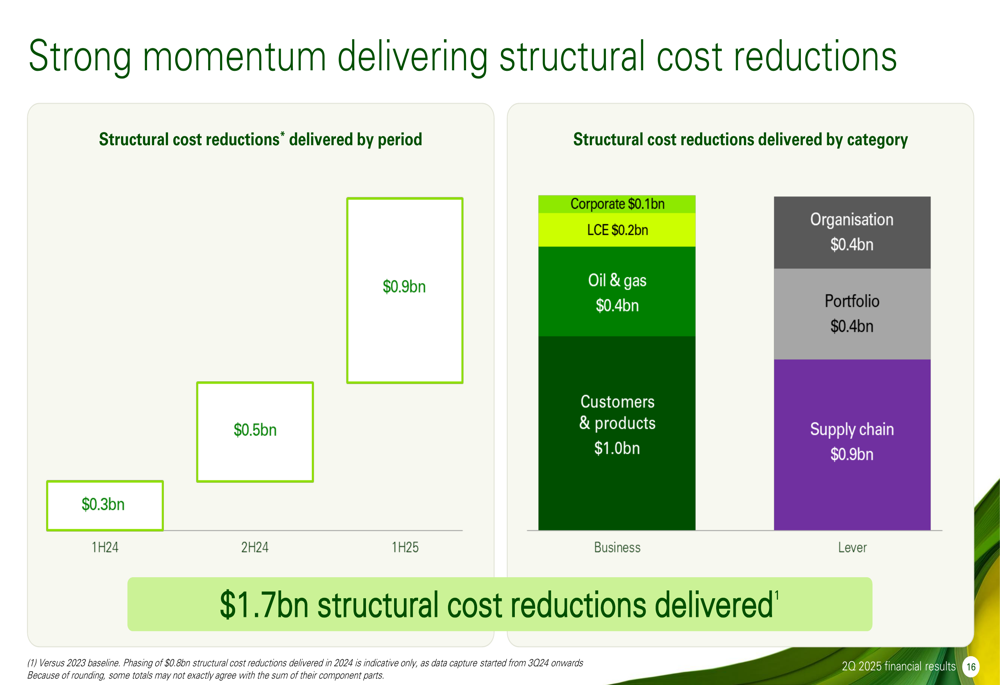
Technology is playing a crucial role in enabling these cost reductions and productivity improvements. BP reported a 5% improvement in oil and gas operations through production optimization and real-time monitoring, while well planning efficiency in Azerbaijan improved by 90%. In the convenience and mobility segment, technology has enabled a 50% reduction in the time required to produce point-of-sale marketing materials.
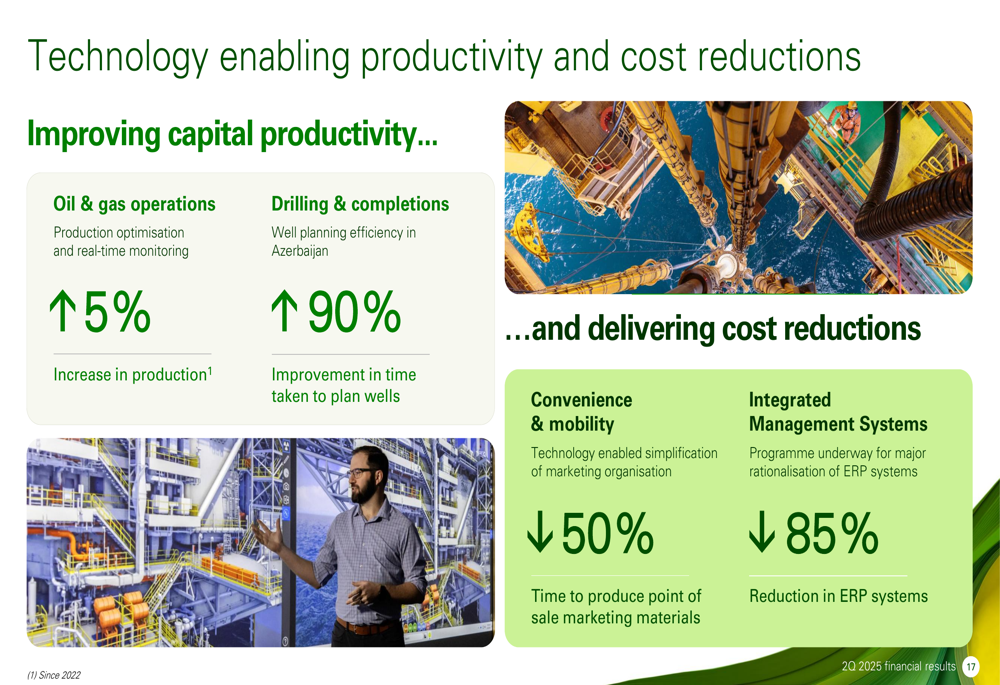
Forward-Looking Statements
BP has outlined ambitious targets for the coming years, focusing on sustainable growth and shareholder returns. The company aims to achieve more than 20% compound annual growth rate in adjusted free cash flow from 2024 to 2027, reduce structural costs by $4-5 billion by the end of 2027, lower net debt to $14-18 billion by the end of 2027, and achieve a return on average capital employed exceeding 16% by the end of 2027.
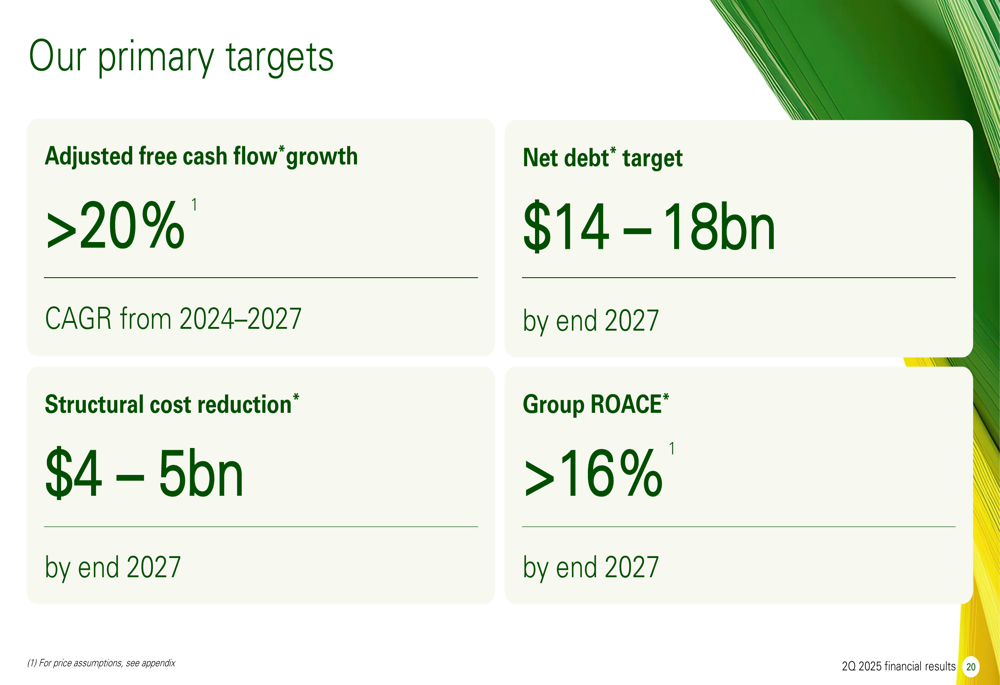
For shareholders, BP announced an increase in its quarterly dividend to 8.320 cents per ordinary share for Q2 2025, representing a 4% increase. The company also announced a share buyback of $750 million to be completed by the third-quarter 2025 results announcement. This continues BP’s commitment to returning value to shareholders, with the company targeting 30-40% of operating cash flow to be distributed through dividends and share buybacks.
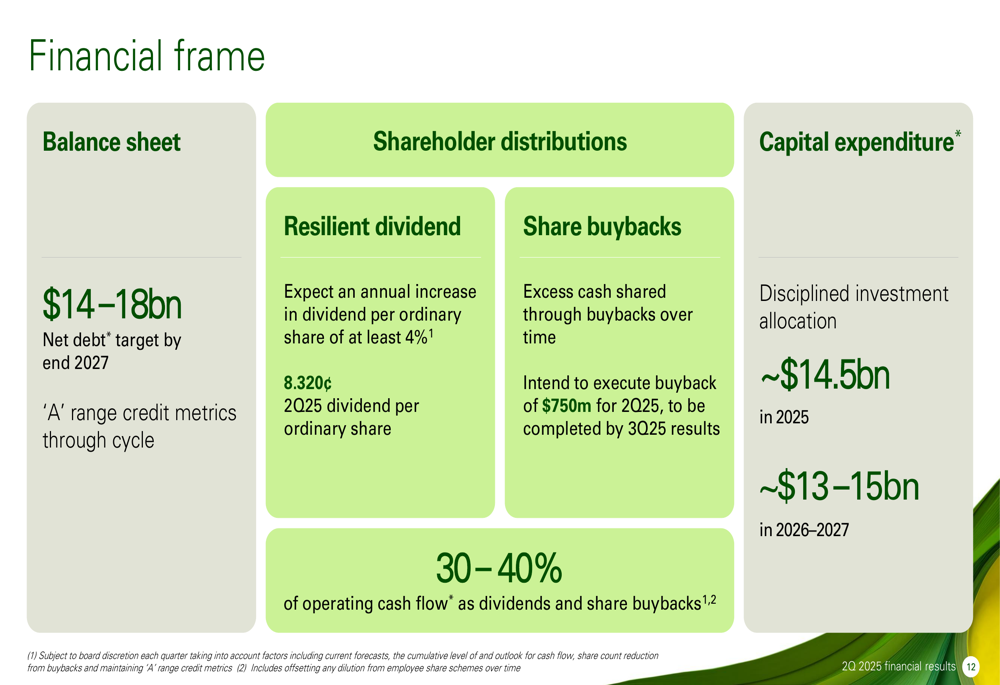
Looking ahead to the third quarter of 2025, BP expects reported upstream production to be slightly lower than in Q2 due to seasonal maintenance activities. For the full year 2025, the company anticipates reported upstream production to be slightly higher than in 2024, with underlying production growth of around 2%. Capital expenditure for 2025 is expected to be approximately $14.5 billion, with a target range of $13-15 billion for 2026-2027.
BP’s strategic focus on cost reduction, portfolio optimization, and disciplined capital allocation positions the company to navigate the evolving energy landscape while delivering sustainable returns to shareholders.
Full presentation:
This article was generated with the support of AI and reviewed by an editor. For more information see our T&C.
